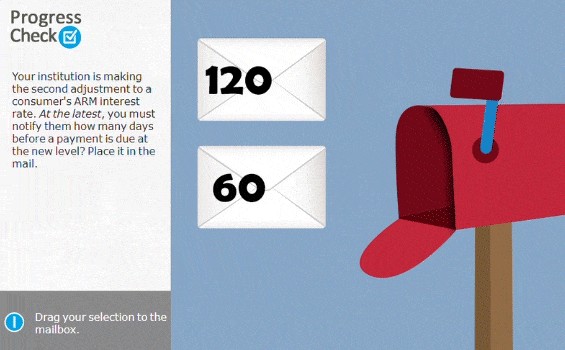-
Training
Why Gamification Should Be a Priority in Training
August 11, 2022
For anyone born after the 1960s, video games have been a solid part of their culture their whole lives. But gamification isn't the same as playing the latest video game. In training, gamification is more about using interactive learning to reinforce the knowledge an employee needs to do their job well.
Typically, gamification in training incorporates game-like features such as storytelling and problem solving. It's become so popular that more than half of U.S. employees receive training that uses gamification.
Why Use Gamification in Training?
So, why has gamification become so popular? Companies worldwide lose an alarming $13.5 million per year per 1,000 employees due to ineffective training. Yet studies have shown employees feel learning using gamification is more exciting, can increase productivity and employee engagement, and enhances motivation.
There are several ways financial institutions can use gamification in their training:
- Onboarding new employees
- Retraining current employees
- Teaching employees about new products, software, or technology
- Improving staff understanding of company policies and compliance
- Helping employees fix skill gaps
The Psychology of Gamification
For a gamification experience to be successful, it should fuel four main psychological principles. Gamification needs to tap into a human's basic need for recognition and achievement; use narratives to establish an emotional connection; relieve stress while learning; and encourage users to continue playing by using awards, certificates, etc.
Experts have discovered that gamification is essentially 75% psychology and 25% technology. Why is the psychology aspect of gamification so significant? It all boils down to how it affects the brain:
- Hippocampus — The hippocampus is the part of the brain that centers on learning and memory. Using puzzles and games to learn lets this part of the brain become more flexible.
- Oxytocin — Oxytocin is a chemical the brain releases that generates feelings of trust and empathy. So, when the brain receives information from a story, it values that information more.
- Serotonin — You know that warm feeling of accomplishment when you recall a past success? That's when serotonin is triggered and can positively affect your overall mood.
- Endorphins — Endorphins are the "feel-good" chemicals the brain releases during game playing that can help lower levels of stress and anxiety.
Does Gamification Work?
If you look at the National Training Laboratory's learning pyramid, it shows that learners only remember 5% of what they hear in a lecture while 75% learn better by practical doing. Gamification taps into this by offering practical opportunities in training while making it fun. This may be why a significant 95% of employees prefer a gamified work and training experience.
So yes, gamification in training works. The question remains, how are you integrating gamification into your training?
-
Recent Articles
- Up Your FAQ — Part II
- Up Your FAQ (Financial Advisor Quotient)
- Sleep tight — Your money is safe!
- The Risk of NOT Addressing Learning Gaps
- It's Not About Training; It's About Learning
